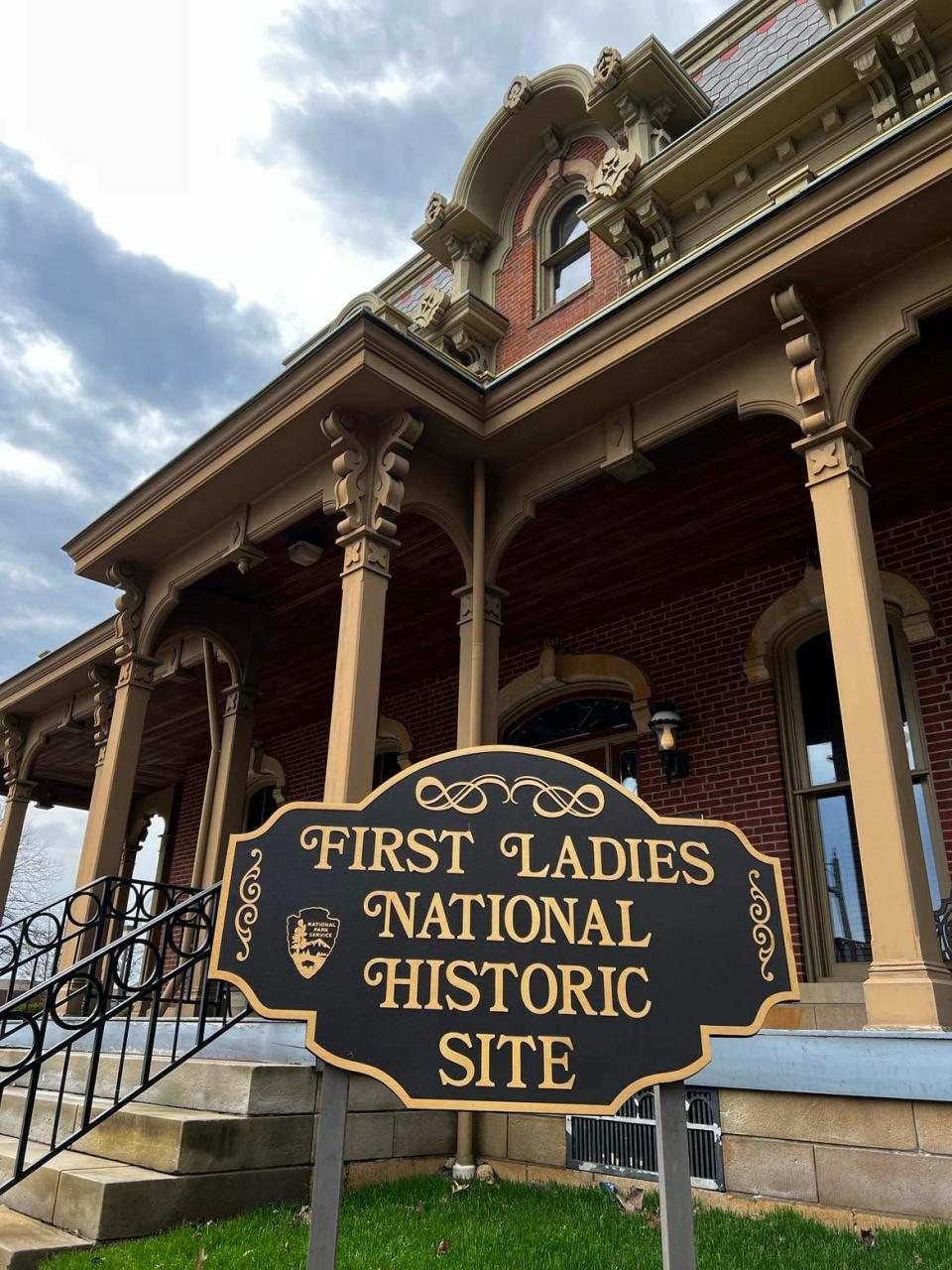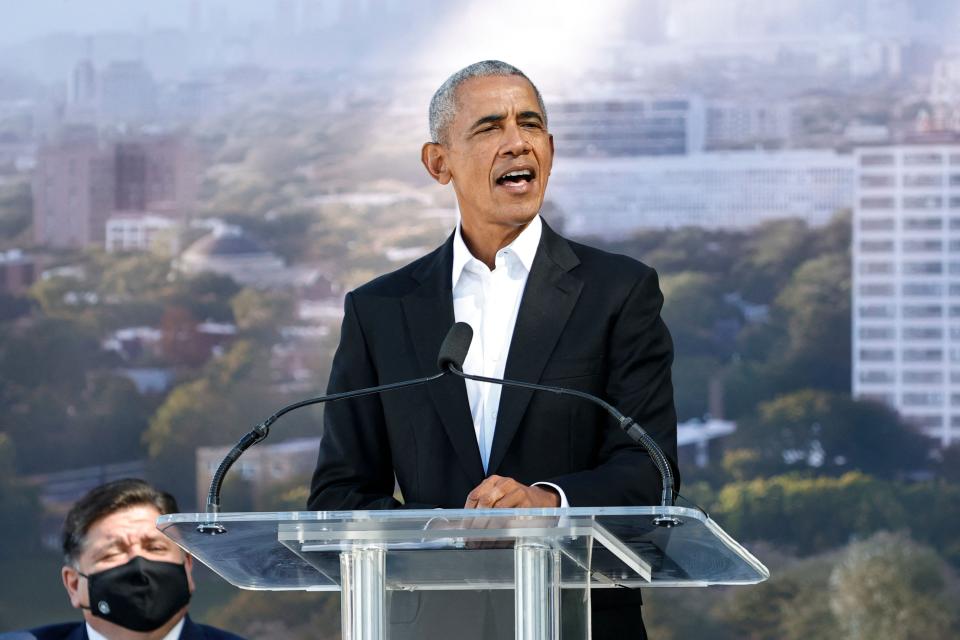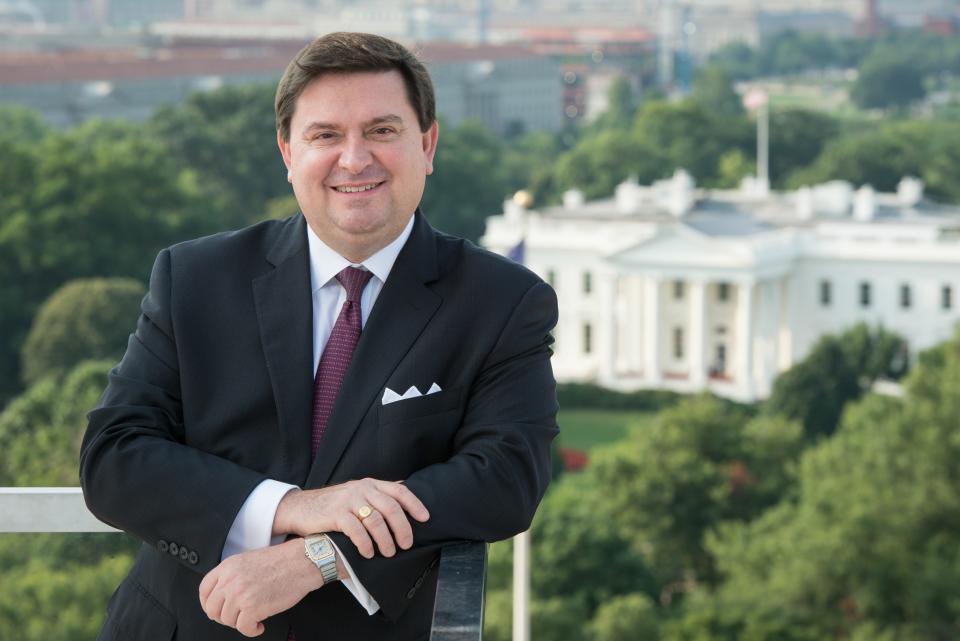From Lincoln's cottage to Washington's farm, preserving history helps us prepare leaders
- Oops!Something went wrong.Please try again later.
- Oops!Something went wrong.Please try again later.
- Oops!Something went wrong.Please try again later.
- Oops!Something went wrong.Please try again later.
- Oops!Something went wrong.Please try again later.
To be truly understood, history has to be experienced − beyond schoolbooks and films and the internet. The good news is that it has never been easier for Americans to encounter more than 230 years of presidential history firsthand. We are blessed with a rich and growing trove of 15 exceptional presidential libraries, along with more than 140 other museums, birthplaces, childhood homes and sites across the country that help us remember our presidents and their times.
There is nothing like the up-close experience of seeing our presidents’ papers, videos, photos, drawings, furnishings, artifacts and even clothing to bring their legacies and their eras to life. Surprising revelations await − along with changes of perspective that only a personal encounter with history can provide.
No other country honors and features our leaders the way we do, at sites from coast to coast that are run by the National Archives, National Park Service and National Trust for Historic Preservation, as well as private institutions and other entities of all sizes. Some are large and well-funded. Others are small and powered by volunteers. They are all extraordinary outposts of presidential and civics education.
Preserving American president historical sites
The job of preserving history as time marches forward can be challenging but incredibly rewarding.
Virginia’s Ferry Farm, where George Washington grew up, reverted to ordinary farmland over two centuries. But after it was saved from commercial development, more than three-quarters of a million objects and artifacts were unearthed, including remnants of Washington’s four-room childhood home with its three fireplaces and stone cellar.
Where past and present coexist: White House furniture is America's living history
Ceramics revealed that Washington’s mother, Mary Ball, repaired broken vessels to make do after the death of George Washington’s father. Other buildings housed the enslaved people who cooked and worked in their fields.
In the heart of Canton, Ohio, the Victorian home where President William McKinley lived the longest has been restored with period furnishings and wallpaper. The Saxton-McKinley House, where first lady Ida Saxton McKinley grew up, also houses the National First Ladies Library, the only one of its kind.

Presidential sites are not just portals to a different time. They continue to offer fresh, innovative exhibits and programs that connect past times to our times.
For example, at the cottage in Washington, D.C., where President Abraham Lincoln and his wife escaped the White House to mourn the loss of their 11-year old son, Willie, curators recently offered a first of its kind exhibit, “Reflections on Grief and Child Loss,” exploring the profound anguish and stigma that surrounds the mourning of a lost child.
This summer, the Franklin D. Roosevelt Presidential Library and Museum opened a new exhibit, “Black Americans, Civil Rights, and The Roosevelts.” It tells the story of the many Black community leaders, soldiers and ordinary citizens who pressed the Roosevelt administration to move racial justice forward – and the resulting political evolution of both Franklin and Eleanor Roosevelt that led to new policies.
White House history can't be rewritten: How early presidents failed enslaved people
A new “Service and Sacrifice” exhibit at the John F. Kennedy Presidential Library and Museum explores the tumultuous World War II trials of the Kennedy family, along with the barriers and opportunities that Greatest Generation women and Americans of color faced.
Many sites engage their communities in current events − and sometimes bring national attention to their educational resources, like this week when the Reagan Library hosts a presidential candidates’ debate.
Hosting a presidential site summit to discuss our history
Exciting new ways to experience presidential history are in the works. Former commander in chief Barack Obama’s Presidential Center is under construction in Chicago, including a 225-foot museum that will become a new South Side landmark.
Beside the museum, the center will feature a library, garden, playground and other public gathering spaces – and even a recording studio and a branch of the Chicago Public Library.

Planning is also underway in western North Dakota, where the Theodore Roosevelt Presidential Library will rise from the Badlands near a national park named for the 26th president. A young Roosevelt fled to the region after losing his wife and mother on the same day, and found solace in ranch work and western stars.
His time there stimulated his love of wild spaces, and as president he helped create nearly two dozen national parks and monuments. (Slabs from a copper beech tree he planted at his Sagamore Hill home in New York will be used for a lectern and a conference table.)
Every two years, the White House Historical Association hosts a Presidential Sites Summit, where leaders from these many sites come together to discuss ways to serve the memory of America’s presidents and first ladies – and prepare the next generation of site leaders to educate Americans.
Opinion alerts: Get columns from your favorite columnists + expert analysis on top issues, delivered straight to your device through the USA TODAY app. Don't have the app? Download it for free from your app store.
This year’s summit, taking place this week, explores how to engage new generations and local communities, the role of women in White House history, boosting civics education, using new technologies to tell history’s story, and how the White House has served as a stage for hospitality and diplomacy.
There’s so much presidential and White House history out there waiting to fascinate us, make us better citizens or even spark a young person’s career path. When I take a road trip, I look to see what sites are along the way, and I learn something from each one of them.
These places are national treasures, as different and unique as the men and women whose stories they tell.

Stewart D. McLaurin is a member of the USA TODAY Board of Contributors and president of the White House Historical Association, a private nonprofit, nonpartisan organization founded by first lady Jacqueline Kennedy in 1961 to privately fund maintaining the museum standard of the White House and to provide publications and programs on White House history.
You can read diverse opinions from our Board of Contributors and other writers on the Opinion front page, on Twitter @usatodayopinion and in our daily Opinion newsletter. To respond to a column, submit a comment to letters@usatoday.com.
This article originally appeared on USA TODAY: White House and presidential history should be experienced in person

